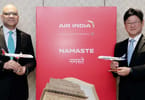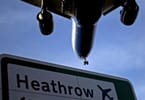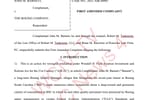KATHMANDU (Reuters) – Less than three years after a long and bloody civil war ended, tourists are returning to Nepal and its spectacular mountain scenery in record numbers despite a global economic slowdown.
The government, led by former Maoist rebels who waged an insurgency against the monarchy for 10 years, has set an ambitious target of doubling visitor numbers to the Himalayan nation by 2011, a top tourism official said.
The Maoists signed a peace deal in 2006 and won a landmark election in April last year, after the end of a civil war that killed an estimated 13, 000 people. Tourism is a key source of income for Nepal, one of the world’s poorest countries.
It brought in $230.6 million in 2007 and accounted for 4 percent of GDP, but there are concerns that the bulk of the money is going to tour operators and not those living in the poor, remote areas where tourists visit.
Tourist arrivals grew 4 percent last year from 526,000 in 2007, the Nepal Tourism Board (NTB) said, the highest number since Sir Edmund Hillary and Tenzing Norgay climbed Mount Everest in 1953 and effectively launched the country’s tourism industry. Prachanda Man Shrestha, the NTB chief, said the government has designated 2011 as “Nepal Tourism Year” and hoped to receive 1 million visitors on the back of the peace deal.
“It is challenging but achievable,” Shrestha said. “Tourism is not a choice but compulsion for the economic development of Nepal.”
EQUAL PAY: A STEEP MOUNTAIN?
There is also a perception the cash from tourism is mainly fattening the wallets of foreign travel operators in Kathmandu.
Tourism Ministry official Ramesh K.C. said the government has promised to spend 30 percent of the income from climbers and trekkers on community development.
“But the money has not been disbursed yet because the procedures of doing this are unclear,” K.C. said.
But some local sherpas in the Khumbhu region, home to Mount Everest, are already threatening to protest.
Analysts said the bulk of the money goes to foreign tour operators because Nepal has an ailing national carrier and mostly depends on foreign airlines. Many hotels import consumer goods as the country still suffers food shortages.
“Tourism must be expanded to rural areas so local farm and other products are consumed by tourists and the income stays in the villages,” said Sanjay Neupane, a tourism analyst.
Nepal’s healthier tourism numbers buck the global trend of a slowdown, which saw a 3 percent negative growth in 2008, Shrestha said, as a result of the worst financial crisis in 80 years.
Shrestha said Nepal, home to eight of the world’s 14 highest mountains, has an advantage over neighbors India and China because it can attract more tourists without extra investment, as those who come do so for the country’s natural sights.
But the 2011 target may be optimistic.
“The international financial recession has yet to impact Nepal’s tourism and overall economy because we don’t have direct integration with international tourist markets,” said Aditya Baral, another official at the NTB.
“The recession might affect tourism growth in 2009 since foreign tour operators are asking us to reduce prices by 15 to 20 percent.”
Frequent travelers say some popular destinations in the remote Himalayas are already overcrowded, and that rafting and kayaking are polluting rivers.
Peter Patterson, a U.S. guide, said the construction of a road in scenic Mustang, in central Nepal, was destroying the mountain environment which attracts tourists in the first place.
“It may be good for the local people but it is not good for tourists,” he said. “The place changes and the attraction for trekking disappears.”






















